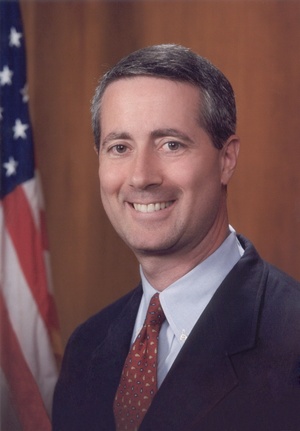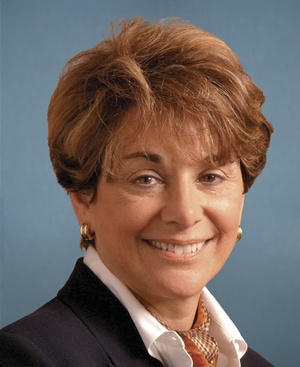The committee scramble: Who has been paying their dues?

Some 50 committees tied to sitting House members, including leadership PACs, joint fundraisers and campaigns, contributed $300,000 or more to the two party committees dedicated to electing their colleagues, Federal Election Commission records show.
As House Republicans ready to elect their leaders for the next Congress on Thursday, Sunlight looked at which representatives, from both sides, have given the most money back to their parties. While fundraising prowess isn’t the only qualifier for members of Congress seeking to climb the ranks of party leadership or nab a key committee seat, it’s among the most important.
Members beat the fundraising drum year round, in part because their own reelection comes with a serious price tag and in part because they are expected to contribute money back to the party. The surplus cash raised by perennial winners or media favorites can be spent in districts with close races, supporting the candidates who need it the most.
Hefty cash transfers to the national party may be a sign of seniority — leaders are expected to raise more — or an indication that a member wants to move up a few rungs on the party ladder.
The tables below show the top 50 sources of cash to the two national House committees. Notice that some members gave through both their campaign committee and their leadership PACs. Still, other overachievers also raised money for the party, and fellow party members, through joint fundraising committees, which benefit more other campaign and party committees and PACs. (In our tables, we list the beneficiaries of each joint fundraising committee in the “notes” field.) Donors can write one big check to a joint fundraiser, which then divides the amount among its beneficiaries. A well-known Representative, such as Nancy Pelosi or former Mitt Romney running mate Paul Ryan, can up their clout by appearing at fundraisers that benefit multiple committees.
The figures in these tables are from the most recent 2014 campaign reports, filed Oct. 15. The senate counterparts of the House party committees are not required to file electronically; comparable 2014 data for those committees is not yet available.
Democratic Congressional Campaign Committee:
National Republican Congressional Committee:
While the unexpected departure of former House Majority Leader Eric Cantor, R-Va., set off the year’s most significant leadership shakeup — which saw California Rep. Kevin McCarthy step in to the spot Cantor vacated when he resigned and Rep. Steve Scalise of Louisiana take the McCarthy’s spot as majority whip — Cantor’s prodigious fundraising still puts him near the top of the heap. Other top fundraisers include House Speaker John Boehner, R-Ohio, and Rep. Jeb Hensarling, R-Texas, who had considered a run for Majority Leader.
Paul Ryan, who’s fundraising like a man who wants to head the House Ways and Means Committee, was also a top contributor to the NRCC. He has a shot because GOP House rules require the current chair, Rep. Dave Camp of Michigan, to surrender his gavel; he also chose not seek reelection to the House. Ryan’s campaign has transferred $1.7 million to the NRCC, and also raised $300,000 for the party via the Ryan-NRCC Victory Committee. John Boehner ally Pat Tiberi, who chairs the Subcommittee on Select Revenue Measures, part of Ways and Means, transferred $580,000 to the NRCC this year.
No one comes close to touching the House Speaker himself, however, who has hit fundraisers from Alaska to Virginia en route to raising and and transferring at least $20 million to the NRCC.

In a similar pattern on the Democratic side, it’s party bigwigs like Reps. Nancy Pelosi of California, Steny Hoyer of Maryland and Jim Clyburn of South Carolina who have brought in the most for their party, though none have come close to matching the eye-popping sums of the Republican leader. The top of the pecking order on the Democratic side of the House looks unlikely to change at this stage, but a raft of retiring members has cast the seating arrangement of some prominent committees into question.
Ranking member Henry Waxman, D-Calif., and 59-year Democratic veteran John Dingell of Michigan will soon depart the prestigious Energy and Commerce Committee. The leadership vacuum has set up a contest between California Rep. Anna Eshoo, a Pelosi ally, and third-in-command Frank Pallone Jr. of New Jersey, according to reports from Politico. Both have been acting the part: Eshoo’s campaign has given $300,000 back to the party, while Pallone chipped in $270,000. Eshoo even scored a fundraiser at Pelosi’s Washington home, where ‘suggested’ contributions ranged from $2,500 to $10,000.
Likewise, there are some plum committee chairmanships open to Republicans as well. In addition to Ways and Means, the top seat on the Armed Services Committee is open due to the retirement of Rep. Buck McKeon, R-Calif. Conservative Rep. Mac Thornberry of Texas, currently the Vice Chair, has made no bones about his desire to replace McKeon. A prolific fundraiser, Thornberry shipped at least $340,000 back to his party this cycle and coasted to reelection in his North Texas district.
Not all up-and-comers got that way because of fundraising ability. Rep. Luke Messer, who is the favorite to win the spot of GOP Policy Chair, failed to crack our top 50 list. He transferred around $63,000 to the NRCC through his campaign and leadership committees.
While data from our Real-Time Federal Campaign Finance tracker gives us a good sense of who’s stocking the party’s congressional war chests, news reports indicate that members may meet their party dues in other ways.
In a 2012 story by The Hill on lackluster Republican fundraising, a spokesman for Rep. Jason Chaffetz, R-Utah, told Rachel Leven that Chaffetz had met his party obligations through “individual and PAC donations made to the NRCC in his name.” That is, donors credited Chaffetz when they mailed their checks to the NRCC.
That means in addition to the millions in dues that we can see, there’s plenty more that we can’t. When one election cycle costs more than $3.7 billion, everyone has to pull their weight.

